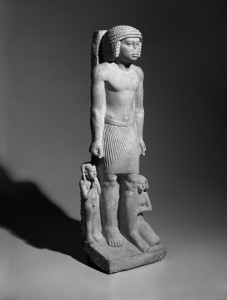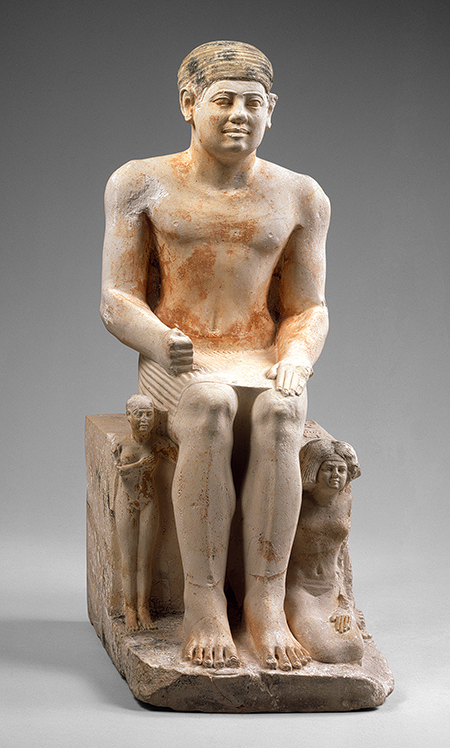In Ancient Egypt the lateral lock of hair was a distinctive of childhood.
For the ancient Egyptian artist of the Old Kingdom, the lateral lock of hair pending from the scalp was, joint with nudity, an iconographical resource applied mainly to boys. Many familiar statues from the Memphite cemetery show how the male was the one with that hairstyle.

Family group from Saqqara. V Dynasty.. Brooklyn Museum
The group statue of dwarf Seneb is one of the most popular examples of the material culture of Ancient Egypt. The two brothers, together and nude, bring their fingers to their respective mouths, but just the boy is wearing the side lock of hair. The girl’s hair is just a dark scalp.
There is also a family group from Saqqara, where the young boy, in a smaller scale, stands at the right of her father. His nudity, is gesture with the finger and his side lock of hair are the iconographical signals in Ancient Egypt of his age.
Also the two dimensional art presents many images of young boys with the side lock of hair, as for instance in the reliefs from the tomb of Ptahhotep.
But, was this ancient Egyptian rule always like that? No.
The group statue of Nikare with his wife and his daughter is one good exception. This statue comes from Saqqara (?) and is dated in the V Dynasty. Nikare’s daughter is represented in an unusual way for the rules of Ancient Egypt.

Statue of Nikare with his family. Metropoitan Museum of Art of New York.
Although she is in a smaller scale and nude, there are two surprising features:
• She has not her finger in her mouth, but her open hand over her breast.

Daughter of Nikare. Metropolitan Museum of Art of New York
• She has a lock of hair. However this lock of hair is not a side one, but a back lock of hair pending from her scalp.
Why is she different? Those two points are not strange in the art of ancient Egypt:
- The open hand on the breast is not a gesture of childhood, but a women’s gesture, quite typical on the images of Ancient Egypt (specially during the Old Kingdom).
- The back lock of hair is also typical in dancers and acrobats, as we can see in the tomb of Mereruka or later in the tomb of Baqet III.
Taking that into consideration we could think that the artist who designed the group statue for Nikare did not want to refer to the daughter of Nikare just as a young girl. The sculptor combined two canons of the art of Ancient Egyp for childhood (smaller scale and nudity) with the adult gesture and the back lock of hair for personaliazing the figure of Nikare’s daughter, as a young woman (maybe a teenager), who belonged to a group of dancers.
Very interesting as usual.